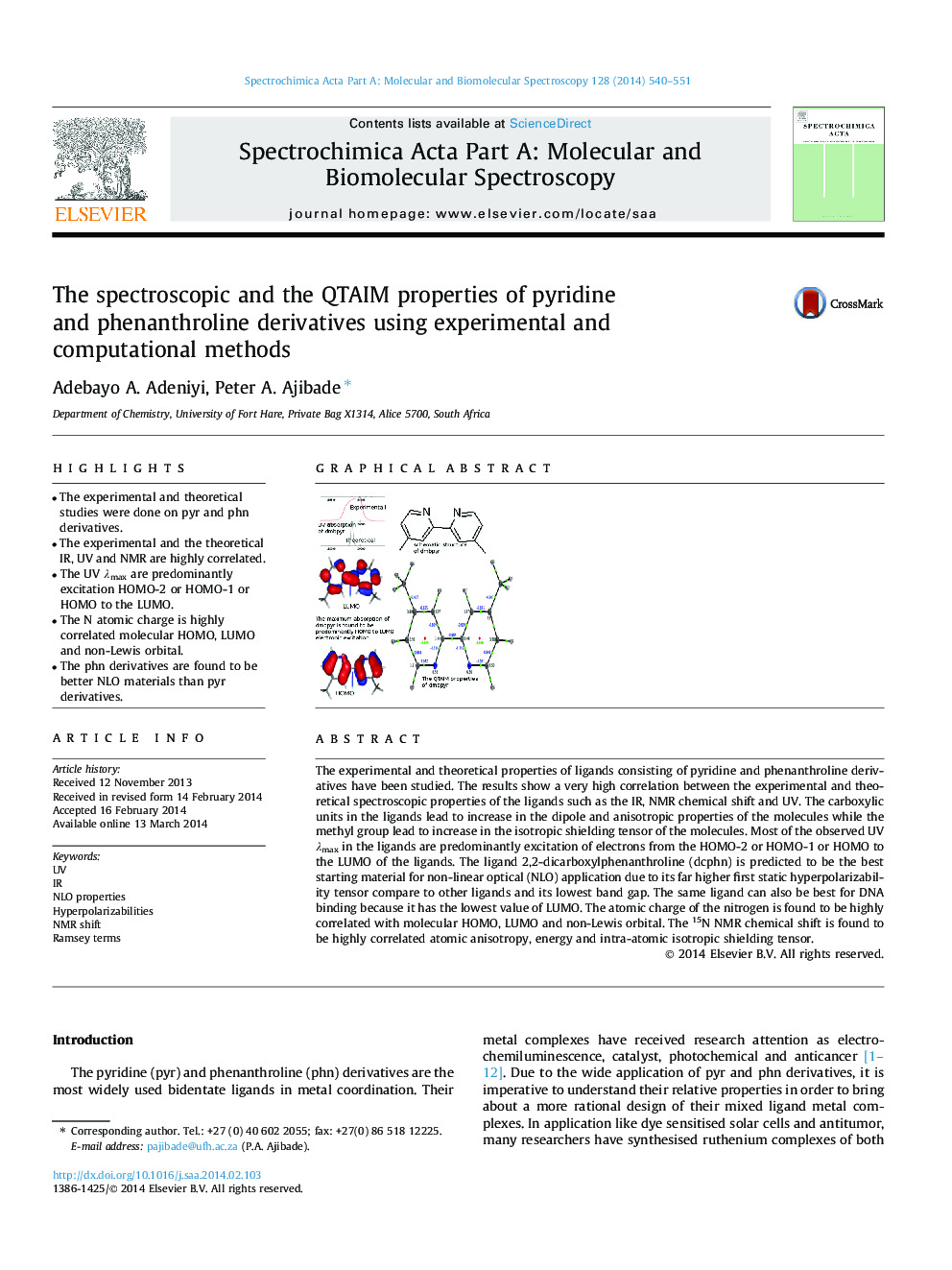| Article ID | Journal | Published Year | Pages | File Type |
|---|---|---|---|---|
| 1230606 | Spectrochimica Acta Part A: Molecular and Biomolecular Spectroscopy | 2014 | 12 Pages |
•The experimental and theoretical studies were done on pyr and phn derivatives.•The experimental and the theoretical IR, UV and NMR are highly correlated.•The UV λmax are predominantly excitation HOMO-2 or HOMO-1 or HOMO to the LUMO.•The N atomic charge is highly correlated molecular HOMO, LUMO and non-Lewis orbital.•The phn derivatives are found to be better NLO materials than pyr derivatives.
The experimental and theoretical properties of ligands consisting of pyridine and phenanthroline derivatives have been studied. The results show a very high correlation between the experimental and theoretical spectroscopic properties of the ligands such as the IR, NMR chemical shift and UV. The carboxylic units in the ligands lead to increase in the dipole and anisotropic properties of the molecules while the methyl group lead to increase in the isotropic shielding tensor of the molecules. Most of the observed UV λmax in the ligands are predominantly excitation of electrons from the HOMO-2 or HOMO-1 or HOMO to the LUMO of the ligands. The ligand 2,2-dicarboxylphenanthroline (dcphn) is predicted to be the best starting material for non-linear optical (NLO) application due to its far higher first static hyperpolarizability tensor compare to other ligands and its lowest band gap. The same ligand can also be best for DNA binding because it has the lowest value of LUMO. The atomic charge of the nitrogen is found to be highly correlated with molecular HOMO, LUMO and non-Lewis orbital. The 15N NMR chemical shift is found to be highly correlated atomic anisotropy, energy and intra-atomic isotropic shielding tensor.
Graphical abstractFigure optionsDownload full-size imageDownload as PowerPoint slide
